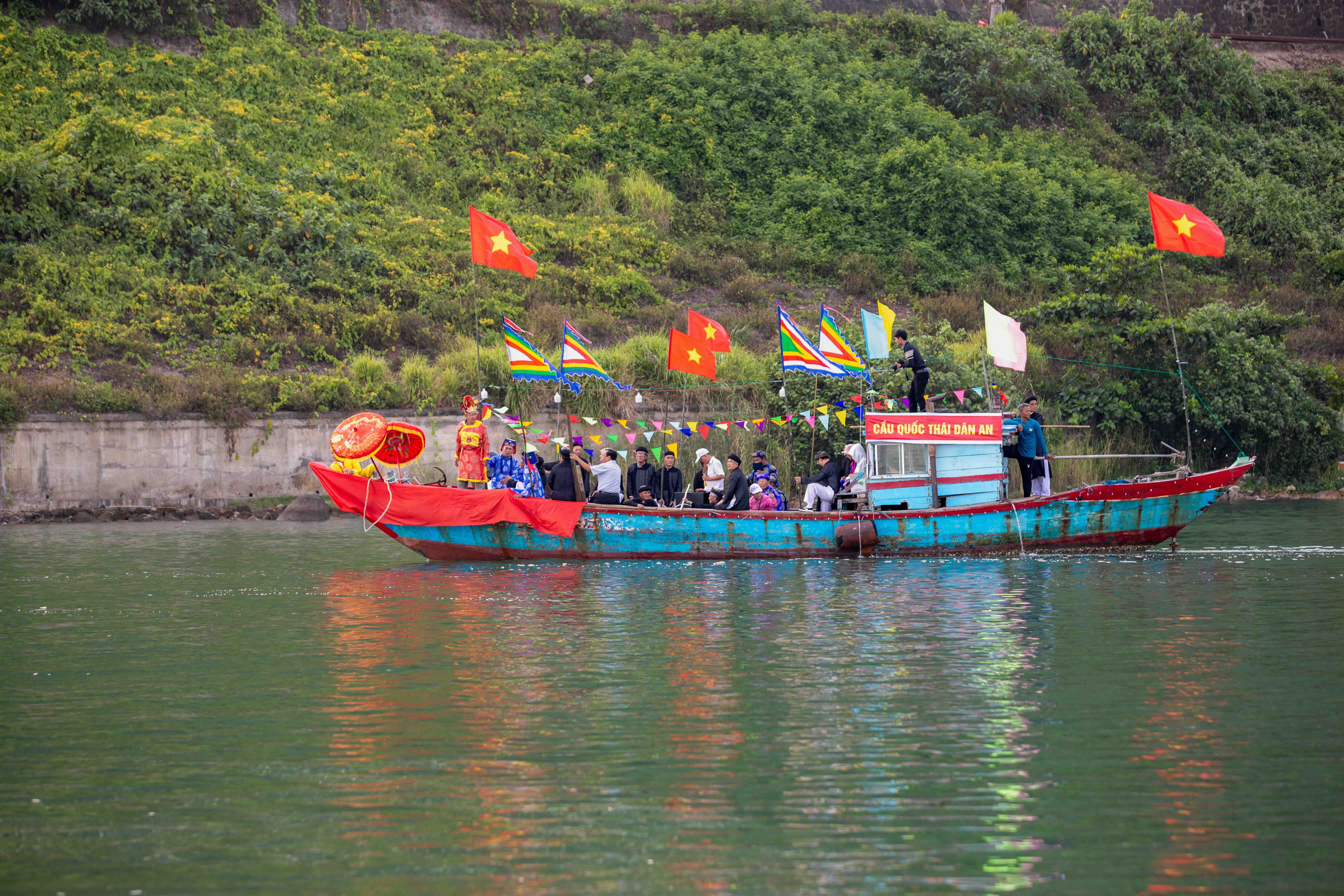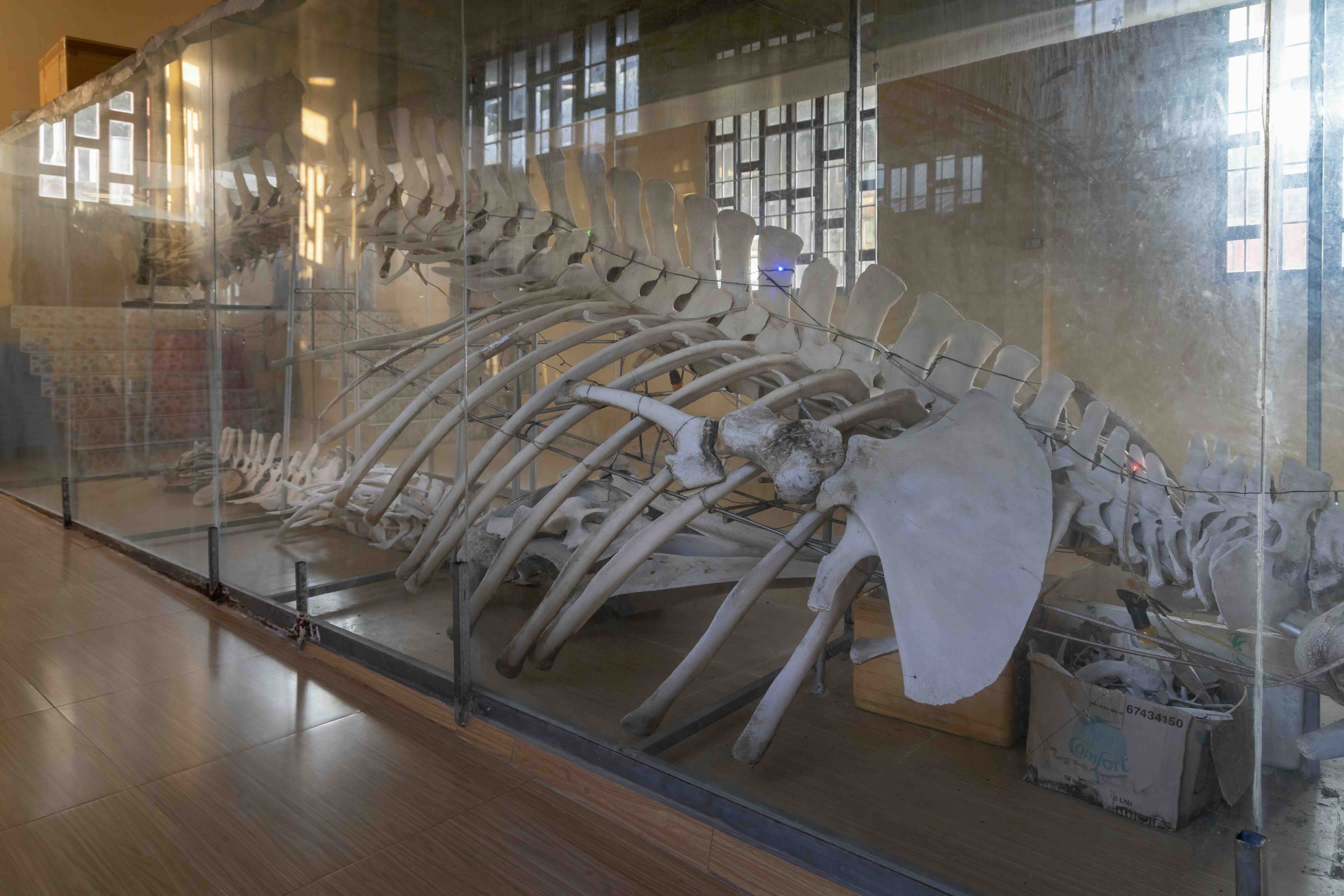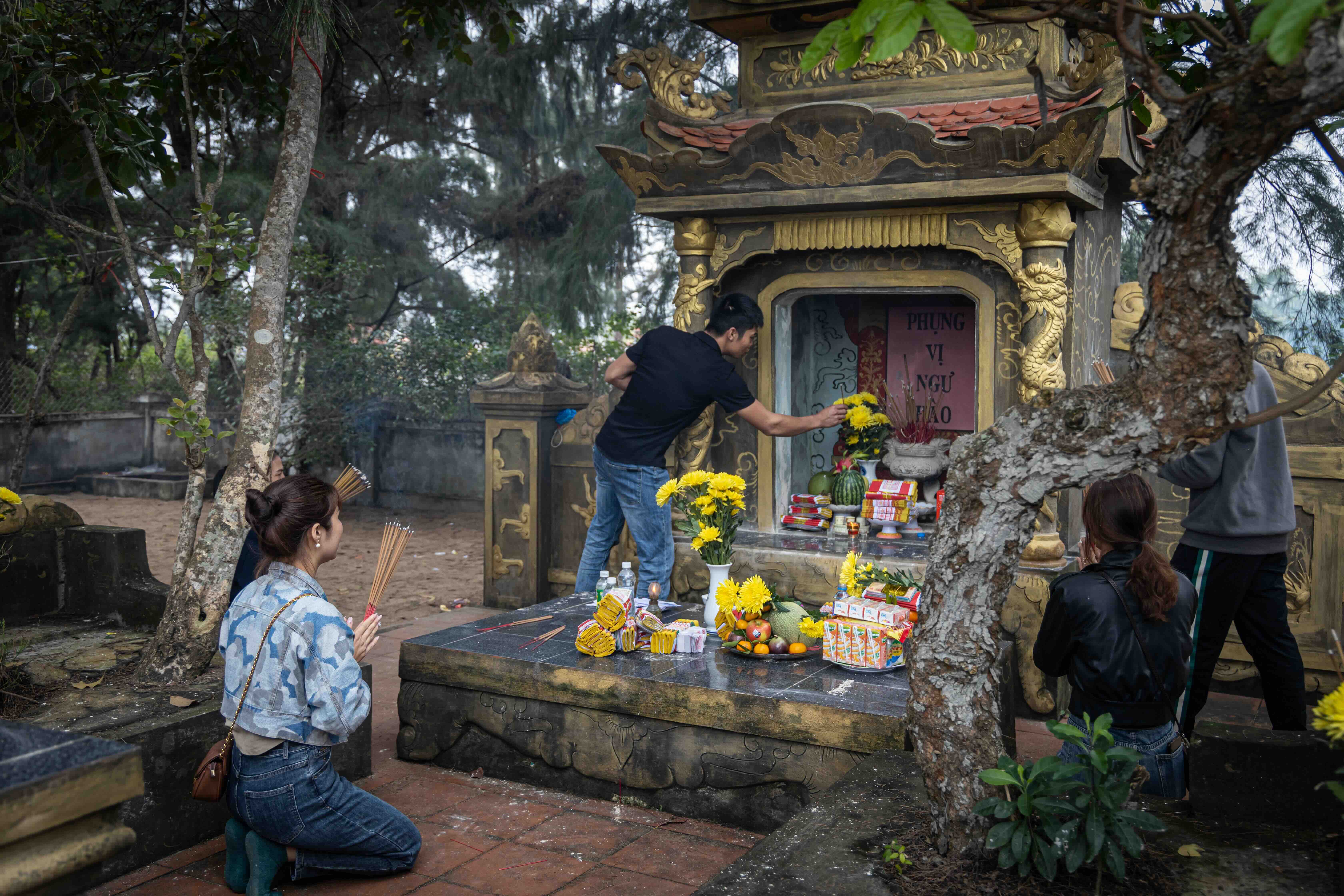Story: Nguyen Phuoc Bao Dan
Photos: Nguyen Hai, Phong Nguyen, Long Ho
Through whale worship, Vietnam’s coastal communities express gratitude toward the whales that often rescue people from danger at sea.
According to the legends of Cham fishermen along Vietnam’s south-central coast, the whale is the incarnation of the divine spirit Cha Aih Va. After mastering powerful magic, Cha Aih Va was eager to return to his homeland. Disobeying his master, he transformed into a whale and swam from the great rivers into the open sea. As punishment, his teacher cursed him to become a swan. Later, however, he was allowed to reclaim his divine status as Po Ri Ak, the god of rivers and seas. Since then, the spirit has been venerated as a benevolent savior, believed to take the form of a whale whenever fishermen call for help—arriving swiftly to rescue those in peril at sea.

Giving thanks to the guardian spirit of the sea
Seafaring communities worship whales as a way to show gratitude and repay them, believing these sacred creatures often come to the aid of seafarers. Fishermen have personified whales as deities, respectfully referring to them as Ca Ong (Grandfather Whale). When a whale dies, it is honored with a funeral and buried according to Confucian rites.
The Cau Ngu Festival is held twice a year, in spring and autumn, to pray for favorable weather and abundant harvests of fish and shrimp. Under the Nguyen dynasty, this folk belief was formally recognized by the royal court in honor of the whale’s role in protecting the nation and its people, particularly in safeguarding fishermen from maritime disasters. The court conferred royal titles upon the whale spirit, including the honorific Nam Hai Cu Toc Ngoc Lan Ton Than (The Honorable Sacred Whale of the Southern Sea). In 1836, during the 17th year of Emperor Minh Mang’s reign, the whale was immortalized on the Nhan Dinh, one of the Nine Dynastic Urns at the Imperial Citadel of Hue, under the title Duc Ngu or Nhan Ngu (Holy Whale/Benevolent Whale).
For coastal fishermen, discovering the body of a deceased whale, whether floating at sea or washed ashore, is considered a blessing, both for the individual who finds it and for the entire community. It is taken as a sign that the sacred spirit has chosen their area as its final resting place, bringing good fortune to the fisherman’s journeys and prosperity to the village.

In periods of prolonged grey skies and drizzle, when the sea is unusually rough, many fishermen believe that a whale may be in distress somewhere within their waters. In such cases, they often send out search parties. When a dead whale is found offshore or drifting toward the coast, the fishermen try their best to bring its body to shore for burial. They carefully wrap the whale in votive papers and white sheets, place many candles and incense sticks above its head, and erect a small hut to house the whale’s body next to the home of the person who discovered it—who takes on the role of the whale’s eldest son.
In the funeral ceremony, the “eldest son” holds the authority to make all decisions and must walk backward in front of the whale’s coffin during the procession. Other fishermen refrain from heading out to sea, instead remaining present and ready to assist, so as to receive the blessings believed to be bestowed by the sacred spirit. Village elders and officials gather to choose the burial site, and fishermen from neighboring areas are informed and invited to attend the ceremony. Colorful banners, ceremonial parasols, and flags are hung around the eldest son’s home, creating a lively yet solemn atmosphere.
On the day of the funeral, the fishermen organize traditional performances such as Sieu dances and Ba Trao chants, to recount the whale’s merits and express their deep respect and sorrow. The Sieu Ong team, composed of rowers, forms a symbolic boat formation, embodying the role of spiritual oarsmen devoted to guiding the whale’s soul to its final resting place.

About a year later, a reburial ceremony is held for the whale. Under the guidance of the village elders, the young men of the community exhume the whale’s remains, which are cleansed with fragrant water, dried under the sun, and prepared for the bone enshrinement ritual. From that point onward, the whale rests eternally within the village’s whale temple, alongside many of its kind, honored and revered by the local fishing community through annual memorial ceremonies.
The whale worship tradition of Central Vietnam’s coastal communities
Rooted in the legends of early indigenous peoples, the whale worship tradition reflects the fusion and evolution of Champa and Vietnamese spiritual practices. It preserves ritual forms and beliefs deeply woven into the spiritual life of Vietnam’s coastal fishing communities.
In Quang Binh province, whale shrines in coastal villages such as Canh Duong, Ly Hoa, and Bao Ninh are closely tied to annual rituals where fishermen pray for good fishing seasons, favorable weather, peace, and people’s well-being. In Hue, whale shrines are not only found in fishing villages like Phuong Dien, Thai Duong, An Bang, Vinh Giang, An Cu Dong, and Vinh Hai, but also in the agricultural village of My Am. According to villagers in My Am, long ago, water carried a whale fetus inland to their fields. Their whale shrine has become a central cultural institution in the village, fully integrated into the community’s system of annual ceremonies and festivals. In coastal regions of Quang Nam, Quang Ngai, Binh Dinh, Phu Yen, and Khanh Hoa, whale shrines are commonly found in fishing villages and hold a vital place in the spiritual life of local communities.
Vietnam’s coastal communities, whose livelihoods are tied to the sea, have long practiced various forms of worship dedicated to guardian sea deities—protectors of their trade and saviors in times of peril on the open water. Among these, whale worship stands out as a tradition that vividly reflects the region’s history of cultural exchange and adaptation. Through this ancient ritual, the Vietnamese people affirm shared values within their cultural heritage, expressing a deep spirit of gratitude and humanistic reverence.










